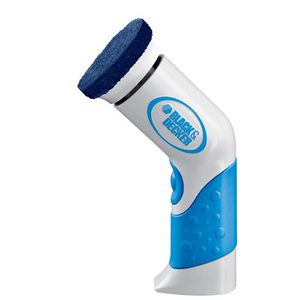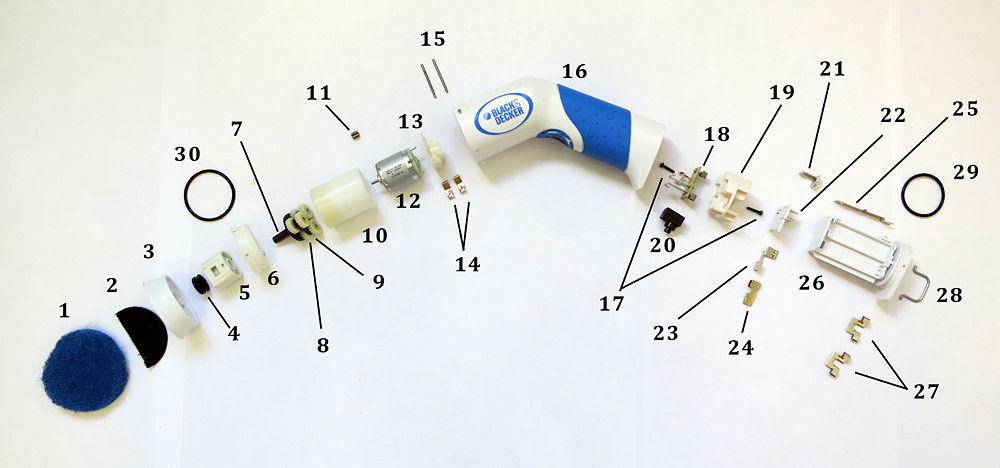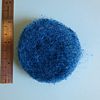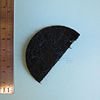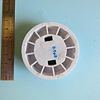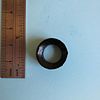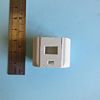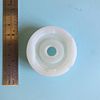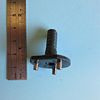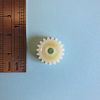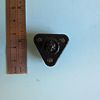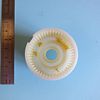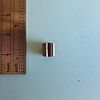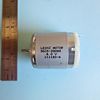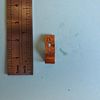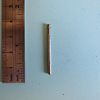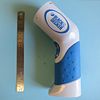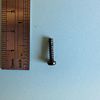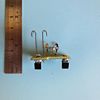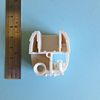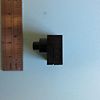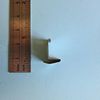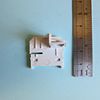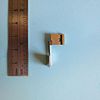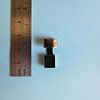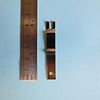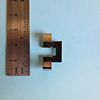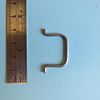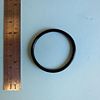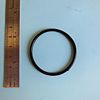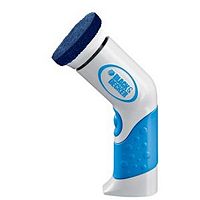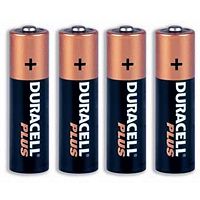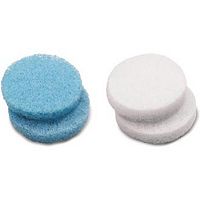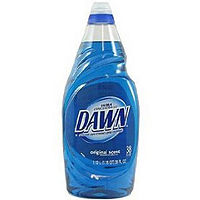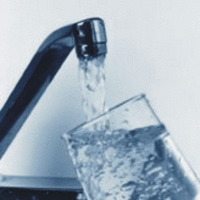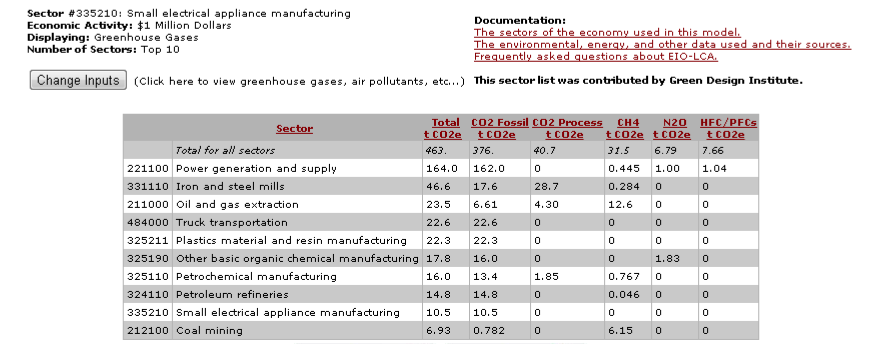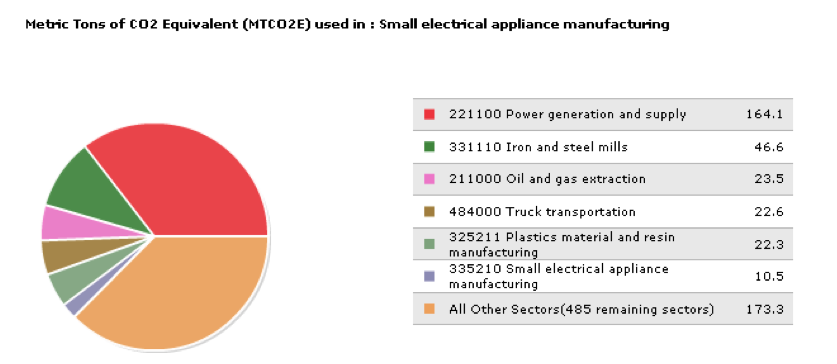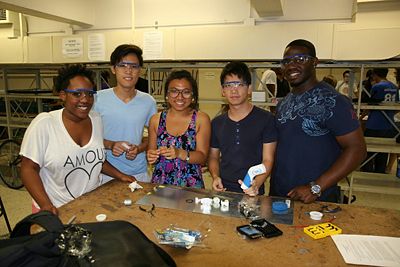Power scrubber
From DDL Wiki
(→Design For Environment) |
(→Design For Environment) |
||
| Line 554: | Line 554: | ||
[[Image:Power_scrubber_DFE1.png|thumb|879px|center|description]] | [[Image:Power_scrubber_DFE1.png|thumb|879px|center|description]] | ||
| - | [[Image:Power_scrubber_DFE2.png|thumb|center]] | + | [[Image:Power_scrubber_DFE2.png|thumb|837px|center|description]] |
==The Team== | ==The Team== | ||
Revision as of 22:37, 20 September 2012
Contents |
Exectuve Summary
Major Product Stakeholder Analysis
We identified four major categories of stakeholders for our product. They are manufacturers, shipping & transportation companies, retailers, and consumers.
Stakeholder Objectives
- Manufacturers
Low cost raw materials Simple manufacturing process required for materials chosen -- easy for mass production Energy efficient manufacturing process Recyclable materials Easy assembly Low cost packaging
- Shipping & transportation companies
Firmly packaged Light weight packaging Space efficient mass packaging
- Retailers
Appearance Cost Marketability (consumer needs) Durability
| Stakeholder Needs and Wants | ||
|---|---|---|
| Stakeholder | Needs | Wants |
| Consumer |
|
|
| Retailer |
| |
| Manufacturer |
|
|
| Shipping & Transportation |
|
|
Product User Study
Mechanical Function
Parts List
| Part Number | Name | Quantity | Mass (g) | Subassembly | Function | Material | Manufacturing Process | Image |
|---|---|---|---|---|---|---|---|---|
| 1 | Sponge | 1 | Exchangeable Head | Provides a rough surface for cleaning | Off the Shelf | |||
| 2 | Velcro | 1 | Exchangeable Head | Holds the sponge to the device head while allowing users to change the sponge | Off the Shelf | |||
| 3 | Device Head | 1 | Exchangeable Head | A removable device head connecting the sponge and the main device through the connector | ABS | Injection Molding | ||
| 4 | Rubber Ring #1 | 1 | Connector | Seals the gadget from water | Rubber | Off the Shelf | ||
| 5 | Connector | 1 | Connector | Connection point on the device that allows device head switching | PA6/G30 Plastic | Injection Molding | ||
| 6 | Gear Cover | 1 | Gear Housing | Secures the planetary gear in the gear housing | POM plastic | Injection Molding | ||
| 7 | Planetary Gear #1 | 1 | Gear Housing | Decreases motor speed while increases torque | Steel | Off the Shelf | ||
| 8 | Planetary Gear #2 | 6 | Gear Housing | Decreases motor speed while increases torque | ABS | Injection Molding | ||
| 9 | Planetary Gear #3 | 1 | Gear Housing | Decreases motor speed while increases torque | Steel | Off the Shelf | ||
| 10 | Gear Housing | 1 | Gear Housing | Housing that holds the planetary gear while aligning the motor with the gear | ABS | Injection Molding | ||
| 11 | Gear on Motor | 1 | Motor Housing | Gear connecting the motor and the planetary gear | Steel | Off the Shelf | ||
| 12 | Motor | 1 | Motor Housing | Provides rotating action of the device | Multiple | Off the Shelf | ||
| 13 | Motor Housing | 1 | Motor Housing | Secures the motor to two conducting copper pieces | ABS | Injection Molding | ||
| 14 | Conductor #1 | 2 | Motor Housing | Extends the electrical connection copper on the motor | Copper | Die Cutting and Bending | ||
| 15 | Pin | 2 | Finishing Assembly | Secures the interior subassemblies to the outer shell | Steel | Extruding | ||
| 16 | Outer Shell | 1 | Finishing Assembly | Secures interior subassemblies, provides waterproofing, and providing grip for the users | ABS, Rubber | Injection Molding | ||
| 17 | Screw | 2 | Circuit Board | Secures the circuit board to its housing and secures the circuit board housing to the outer shell | Steel | Off the Shelf | ||
| 18 | Circuit Board | 1 | Circuit Board | Provides electrical input control | Multiple | Off the Shelf | ||
| 19 | Circuit Board Housing | 1 | Circuit Board | Secures the circuit board and the button to the outer shell | ABS | Injection Molding | ||
| 20 | Button | 1 | Circuit Board | Turns the device On/Off | Plastic | Off the Shelf | ||
| 21 | Conductor #2 | 1 | Battery Housing | Allows electricity to conduct from the battery housing to the circuit board | Nickel Plated Copper | Die Cutting and Bending | ||
| 22 | Battery Housing #1 | 1 | Battery Housing | Holdes the battery and conductors in place | ABS | Injection Molding | ||
| 23 | Conductor #3 | 1 | Battery Housing | Connects the battery in series | Nickel Plated Copper | Die Cutting and Bending | ||
| 24 | Conductor #4 | 1 | Battery Housing | Connects the battery in series | Nickel Plated Copper | Die Cutting and Bending | ||
| 25 | Clicker | 1 | Battery Housing | Holds the battery housing in the outer shell | Nickel Plated Copper | Die Cutting and Bending | ||
| 26 | Battery Housing #2 | 1 | Battery Housing | Holdes the battery and conductors in place | ABS | Injection Molding | ||
| 27 | Conductor #5 | 2 | Battery Housing | Connects the battery in series | Nickel Plated Copper | Die Cutting and Bending | ||
| 28 | Handle | 1 | Battery Housing | Provides a handle for users to pull the battery housing out of the outer shell | Steel | Extruding and Bending | ||
| 29 | Rubber Ring #2 | 1 | Battery Housing | Provides seal for waterproof, provides friction and holds the battery housing to the outer shell | Rubber | Off the Shelf | ||
| 30 | Rubber Ring #3 | 1 | Connector | Provides seal for waterproof | Rubber | Off the Shelf |
Design For Manufacturing and Assembly
DFM
The product uses standardized components for many of the components such as the screws, motor, and Velcro, etc. For the ease of manufacturing, all the conducting metal pieces have similar dimensions; this means that fewer tools and setups are required during the manufacturing process. Most of the other customized parts are made of the same material, ABS, which are easy to work with using injection molding for mass production. Furthermore, since injection moldings are used for the ABS parts, not many finishing operations are needed to further reduce cost. The product uses the rubber rings as a multifunctional part what work as a seal for water proof as well as a locking mechanism for holding parts together. The rubber rings also help avoid tight tolerances based on its flexibility, which result in cost reduction. For the outer shell, special process of injecting two materials, rubber and ABS, are used to eliminate extra works for assembly.
There are also rooms for improvement. The product is composed of many small pieces in the interior of the device that could possibly be designed with fewer pieces. Also, although injecting molding can account for irregular shape, those small pieces can be modified into simpler shapes without losing their functionalities. The battery holder can be considered to be bought off the shelf and integrate with the product with minor design changes. The product uses soldering for connecting the motor to the conducting metals; however, it might be less cost and time consuming if the conducting piece can be redesign to secure the connection.
Overall, the design choices are made well for consideration of manufacturing. Limited materials are used for the components, they are chosen to be easily fabricated, and most of them do not require secondary and finishing operations. Although injecting molding can be expensive, the product is mass produced, which cut down the cost for every extra part produced. On the other hand, it may be possible to reduce the numbers of parts by combining subassembly into one component, which can make the design simpler. It is also important to consider the cost of using special process property as oppose to assembling after the parts are manufactured.
DFA
The product only requires two pins and two screws in the whole assemble and the outer shell only consists of one piece. One example of eliminating the use of screws in assembling is the snapping mechanism used for closing the gearbox. Another example is using rubber as a way to lock the battery housing in place. The product consists multiple subassemblies, such as the battery housing, the circuit board, and the motor/gear set. Each component is designed in certain shapes to prevent mistakes in assembly orientation. The way the circuit board subassembly comes in contact with the motor subassembly is one example. The assembly directions are minimized to two and components either go in from top or bottom. The openings also have different shapes to help recognizing what goes where. Furthermore, the outer shell is not only roomy but also provides guides on the interior wall for subassemblies to slide and fit in easily.
Besides the fact that the product requires very little screws and pins, there are unnecessary parts that can be removed from the assembly. The connecting part between the device head and the output shaft (part number 5) can possibly be part of the device head. Also, the clipping metal piece on the battery house (part number 25) seems to be functionless due to the existence of the rubber ring. It might also be possible to reduce gears with different selection of motor. To further reduce the use of screws and pins, a snap fit can be used to secure the interior assemblies in place instead of using pins.
Overall, the product is easy to assemble and limited tools are required to accomplish. The only assembly process that requires more resources are press fitting the pins and soldering the motor to the conducting metal. Improvements on those two assemblies can be done by using other methods. All the subassemblies are easily to go and fit into the out shell, either from the top or from the bottom. Most parts are unique and there is little to no confusion when assembling the part back together. However, there are also unnecessary parts that can be eliminated to simplify the assembly even more.
Failure Mode and Effect Analysis
| Item and Function | Failure Mode | Effects of Failure | S | Causes of Failure | O | Design Controls | D | RPN | Recommended Actions |
|---|---|---|---|---|---|---|---|---|---|
| Battery Housing | Battery housing comes loose | No Power Source | 4 | Not closing properly | 4 | Scrubber would not turn on | 2 | 32 | A better clicking mechanism |
| Button: ON/OFF | Button sticks | Can't turn on or can't turn off | 4 | Alignment of button | 2 | Scrubber would not turn on | 1 | 8 | Make it a flip switch |
| Outter Shell | Cracking | No longer water proof | 4 | Dropping, crushing, overheating | 5 | Scrubber would not turn on | 2 | 40 | Coat entire body with rubber |
| Rubber gripping/waterproofing | Melts or wear and tear | No longer waterproof | 3 | Heat | 2 | Scrubber would not turn on | 3 | 18 | Better material choice |
| Motor-circuit board connection | Welding of copper loosens | Motor does not run | 4 | Fatigue, Overheating | 1 | Scrubber would not turn on | 3 | 18 | Better mesh of the motor with the circuit board |
Design For Environment
| Production | Use | Use | Use | Use | |
|---|---|---|---|---|---|
| Item purchased | Power Scrubber Manufacturing | Battery | Sponge | Soap | Water |
| a) Picture | |||||
| b) Economic Sector Name and # | Small Electric appliance #335210 | Primary battery manufacturing #335912 | Broom, brush, and mop manufacturing #339994 | Soap and cleaning compound manufacturing #325610 | Water, sewage and other systems #221300 |
| c) Reference Unit | 1 item | 4 batteries | 1 piece | 16 oz/bottle | 19.5 gallon/day |
The Team
Team Leader: Xin (Pam) Hu
DFMA Leader: Ken-Soh (Robert) Mai
FMEA Leader: Ben Antoine
DFE Leader: Kelle Patterson
User Study Leader: Shao-Chuan (Ted) Fang
